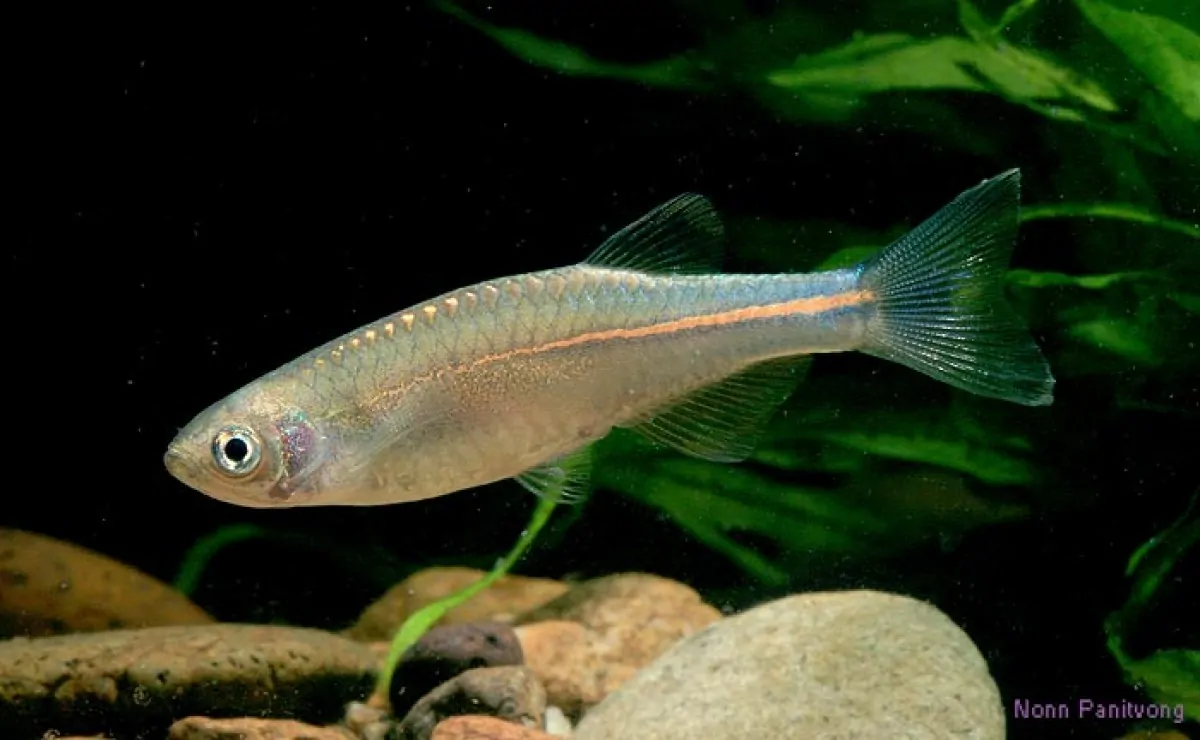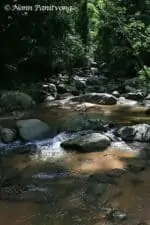Danio albolineatus – Pearl Danio
Danio albolineatus was first described in 1860 by Edward Blyth.
The name albolineatus consists of the part albo, meaning white, and lineatus which means stripes. Danio albolineatus has, however, no white stripe on its body. Therefore, the name of this species might seem strange. Placing specimens of this species in formaldehyde will make the name clear. Dead specimens that are stored for research will start to change their colors. For this Danio species, this storage will result in a white stripe along the body.
So far, this species has seen a lot of different descriptions, resulting in different synonyms for these fish: Nuria albolineata, Brachydanio albolineatus, Danio albolineata, Branchydanio albolineatus, Danio stoliczkae, Danio pulcher, Danio tweediei and Danio tweedie.
Some common names that are being used are Pearl Danio, Gold Danio or Golden Danio.
Description
This species is also called Pearl Danio. Danio albolineatus can, amongst others, be found in ponds. These ponds, often, have a substrate of plant residue. The fish themselves live in schools. Due to the fact that they need to be kept with multiple specimens, the aquarium should not be too small. 70*30*30 cm is an absolute minimum for this species. Keeping them with too few fish to create a school or keeping them in an aquarium that is too small, will negatively influence their health.
Origin
The distribution of Danio albolineatus is rather extensive throughout South Asia. It can be found in Burma (Myanmar), Thailand, Sumatra, Malakka and India. Here it inhabits rivers and streams with a current that ranges from rather weak to strong. However, this species is almost always found in waters with a high amount of plants.
Diet
Danio albolineatus is an omnivorous species and not a picky eater. It will eat almost anything, including fabricated foods. However, to keep the fish in an optimal condition, a varied diet should be presented that includes living foods.
The Aquarium
When we set up the aquarium, we provide large groups of tall plants, but also fine-leaved plants such as Aponogeton crispus, etc., with swimming spaces in between.
The fish prefer an aquarium located in the sun with enough light and a relatively high water temperature (21-25 degrees Celsius). In these conditions, the fish will be in their best health. Danio albolineatus is not particularly sensitive to differences in water chemistry. However, occasional water changes are recommended.
Breeding Danio albolineatus
The breeding aquarium should have a minimum size of 40*25*25 cm. The water itself should have a relatively low water hardness. This can be created by adding distilled or rainwater to the aquarium. The substrate should consist of sand which will need to be covered with algae, moss or aquatic ferns. The temperature of the water should be increased to 25-27 degrees Celsius.
In this aquarium, one male should be combined with two females. When the spawning is completed it will be necessary to remove the fish from the tank. Additionally, the tank should be placed in such a way that the light in the aquarium is dimmed. The eggs are rather sensitive to bright light. 2 to 3 days after spawning, the eggs will hatch. The precise duration is, however, dependent on the water temperature.
Initially, the fry should be fed using small food, such as infusoria. However, after four days, one can start using artemia nauplii. An important aspect of making the fry grow large and strong is keeping the water chemistry proper. Fry is very sensitive to deteriorating water conditions. So frequent water changes must be done. The total amount of fry can be as large as 300 to 400 individuals. These fish need to be placed in a bigger tank as soon as possible to give them enough space to grow. Additionally, the water temperature should be as constant as possible.
Also see theDanio albolineatus breeding report
Video
Author
Peter Bus, AV Pronkjuweel
Copyright images
Nonn Panitvong – Siamensis.org
Choy Heng Wa















Reviews
There are no reviews yet.